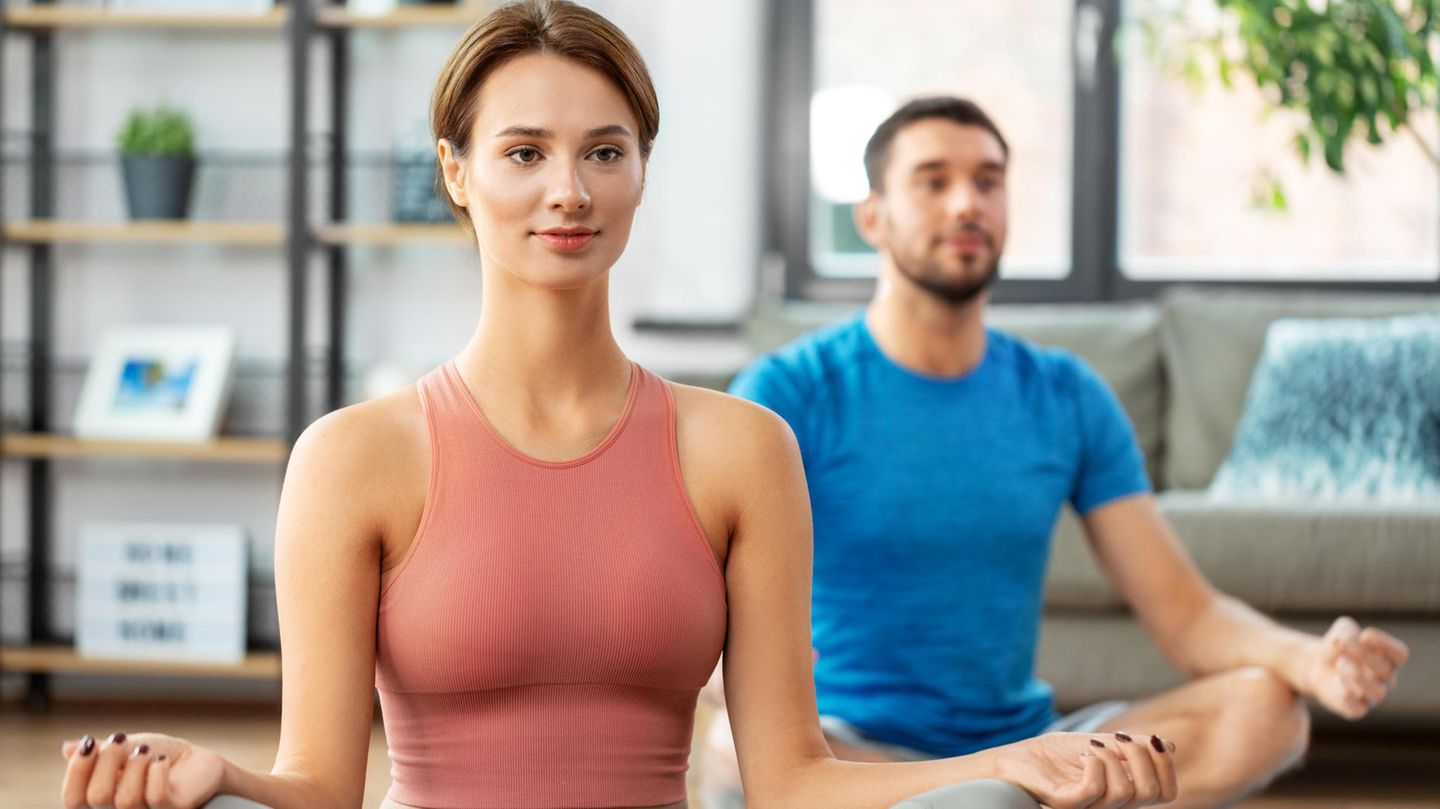Collect thoughts and find inner peace: Meditation takes care of that. And with a little practice, the technology can be integrated into everyday life. We explain how you can learn the basics of meditation in just a few steps.
Meditating is a good practice for anyone who is constantly electrified, sleeps poorly because thoughts are constantly buzzing around in their heads, and those who want more inner peace and serenity overall. And one that is really easy to do integrate into everyday life can, if you get involved and have a little discipline. But anyone who wants to learn meditation should first know what it is and which method is suitable for him.
Meditation is a practice that man does since centuries practiced. Basically, it is about being able to let go of thoughts, focus on the important things and come to more serenity. Various breathing and mindfulness exercises help. In the first step, however, you should meditate calmly on the topic to get an impression of what you are getting into. If you prefer, you can also choose different apps or to help, to find out more and to be actively guided.
Learning meditation: beginners should know that
Not all meditation is the same. Anyone who decides to want to learn it must first choose between two types which are a little different from the outward appearance and the inner state of mind.
- Kontemplative Meditation: In this type of meditation one does not move. You sit, lie or stand. It is therefore also known as passive meditation. Examples of subspecies of this method are Vipassana, Zazen and Samatha meditation. The modern mindfulness exercises that can be learned via apps, for example, are also derived from these forms of meditation.
- Active meditation: Here physical exercises are also performed, the voice is used or mindfulness is integrated into actions. Yoga, Tantra or even some martial arts styles are part of this type of meditation.
The forms of meditation are different in their execution, but the core is the same: It is about learning to concentrate and focusing your attention in a targeted manner. This is done using various methods, in which, for example, the breath, thoughts, physical sensations or sounds and smells are the focus. In this way one learns focus the mind and to calm down overall. By conditioning this approach, you will eventually manage to stop the constant flickering in the mind and to focus more specifically on certain thoughts that are important to you.
Positive effects of meditation can be a strengthened immune system, a lower stress level, improved memory, balance or better sleep. Learning meditation and integrating it into everyday life is definitely worth it – and anyone can start. Namely with these four steps.
Learn meditation in four steps
Step one
As a beginner, it is worth learning passive meditation first. Because this way you internalize breathing exercises and the basic steps, which you can then combine with other activities. First of all, do the following things:
- Where do you want to meditate? At best you should get one fixed place look for something that offers few disruptive factors (noises and unnecessary objects), that makes you feel comfortable and that helps develop routines. This can be a chair, a mat in a cozy corner in the bedroom or the bed. Comfortable clothes, like one or sports pants, is also recommended.
- To get started, you should really be quiet during the exercises so that you can get involved. So it’s best to look for one fixed time of day in which it is quiet, you don’t get any calls or you can be disturbed by another person – for at least ten minutes to start with.
Step two
Once you have found a suitable place and time for yourself, you can start with the first exercises. You don’t have to go to the Schneider or Lotus seat to do this. You can meditate in one any sitting posture. At a certain point in time you internalize the exercises so much that these fixed rituals are no longer absolutely necessary. They are therefore all the more important for the beginning. During the first exercises you should pay attention to the following things:
- The posture should be straight and pleasant so that you can comfortably hold still for at least ten minutes.
- Even if they are not necessary, they are Lotus, tailor and heel seats (for beginners, for example, using a ) three suitable sitting postures. Also a , a rolled up blanket or a seat mat are suitable for meditation.
- When meditating, the shoulders should fall down, the hands should be loosely on the knees or lap, and muscles that are not needed for sitting, such as the muscles of the face, should be relaxed being.
Step three
It is important for beginners to get one time frame create to get involved in meditation very consciously and to improve step by step. You can set an alarm clock or a timer for this. And then you should start with the first exercise in a comfortable, quiet environment in a straight posture:
- Find gentle focus or jump that Close your eyes.
- Deliberately five deep breaths take by inhaling through your nose and exhaling through your mouth. Close your eyes after the fifth breath at the latest.
- Well it is important that Focused attention on breathing allow. But it should follow its very natural rhythm. You yourself should only perceive it very specifically and recognize how the air flows in and out of the lungs, how the stomach and chest expand. If you lose focus in between and are distracted by thoughts, you should notice it, not evaluate it, but instead gently return to the focus on the breath.
With this first simple exercise you learn to recognize how many thoughts actually go through your head – automatically and unconsciously. But if you are completely with yourself, you will recognize it more and more often and consciously divert your attention away from it.
Step four
If you have concentrated on your breathing again and again for about ten minutes at the beginning and have managed to let go of your thoughts again and again when you have wandered, the first important step has been taken. It is important after meditating though not jumping up immediately and get on with the daily chores. It is better to take the meditative mindset with you into the coming actions, to continue to notice the breath and the body feeling and well-being. This is how mindfulness arises.
Other ways to learn meditation
However, if you find it difficult to create new routines on your own or to integrate this time into your everyday life, you can also do it with one professional accompaniment and guidance begin, for example through an app or a .
Apps that are worthwhile for beginners because they guide you through the techniques step by step are, for example:
- Headspace
- 7Mind
- Mindfulness app
Learning to Meditate: More Tips for Beginners
In the beginning, many different thoughts will surely be floating around uncontrollably in your head when you meditate for the first time. This is completely normal and shouldn’t be demotivating. Because with meditation it works not about performance, it’s about conditioning yourself to be more conscious of the mind and learning to let go of those thoughts. But that is only possible with regular practice. Important is:
- You should definitely stick with it and meditate every day accommodate in everyday life.
- If in one day you can’t get your attention back from your thoughts to your breath, you should do not fret. Make yourself aware of it and keep practicing.
- After a few days or weeks, the Duration of the meditation exercises to be expanded again and again. Ten minutes is sufficient at the beginning. In addition, you can consciously create space for meditation in the morning and in the evening, so that at some point it will accompany you naturally through everyday life.
- When you get used to the breathing exercise, you can Expand focus and include other objects besides breathing that one is consciously concentrating on, such as physical sensations, feelings, or even smells.
And apart from that, the following applies: You can’t really go wrong, you just have to consciously engage in meditation – and you will notice that it is definitely good for your body and mind. And lets you escape everyday life for at least a few minutes.
Source From: Stern




